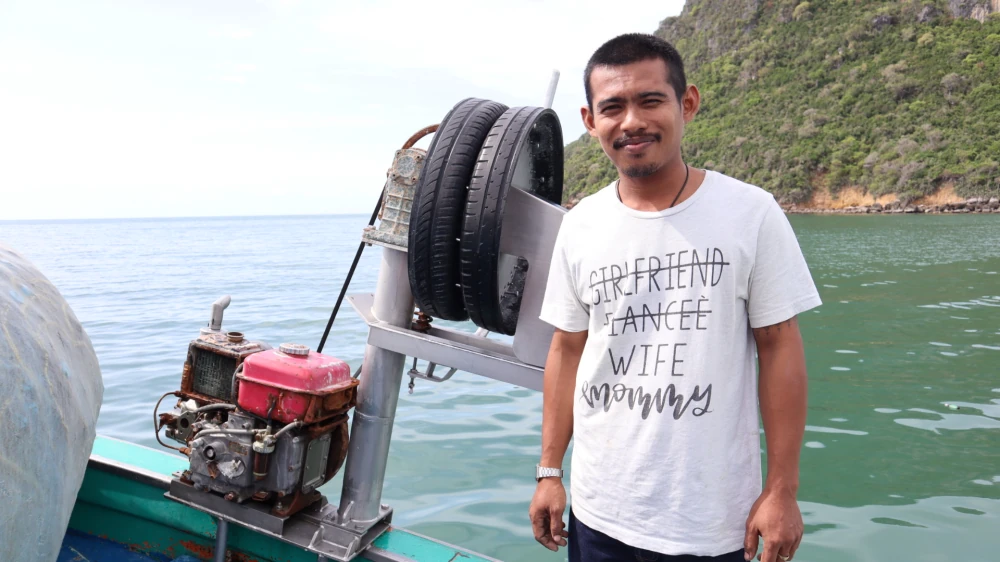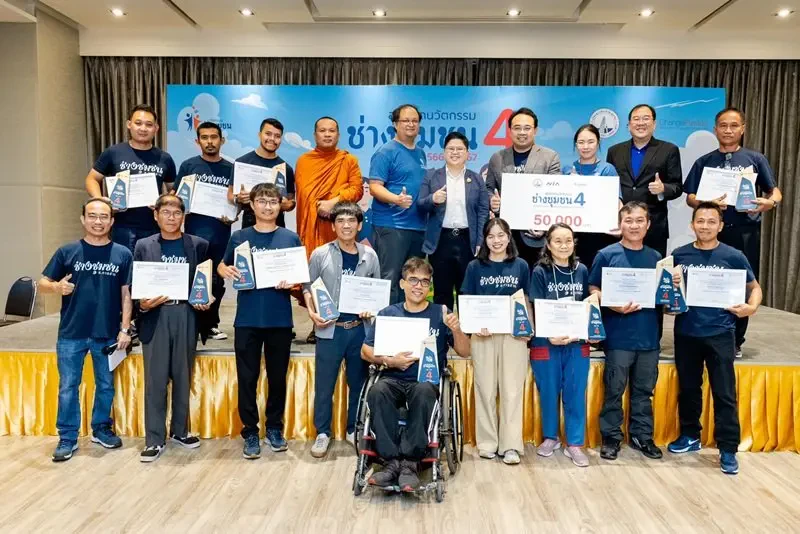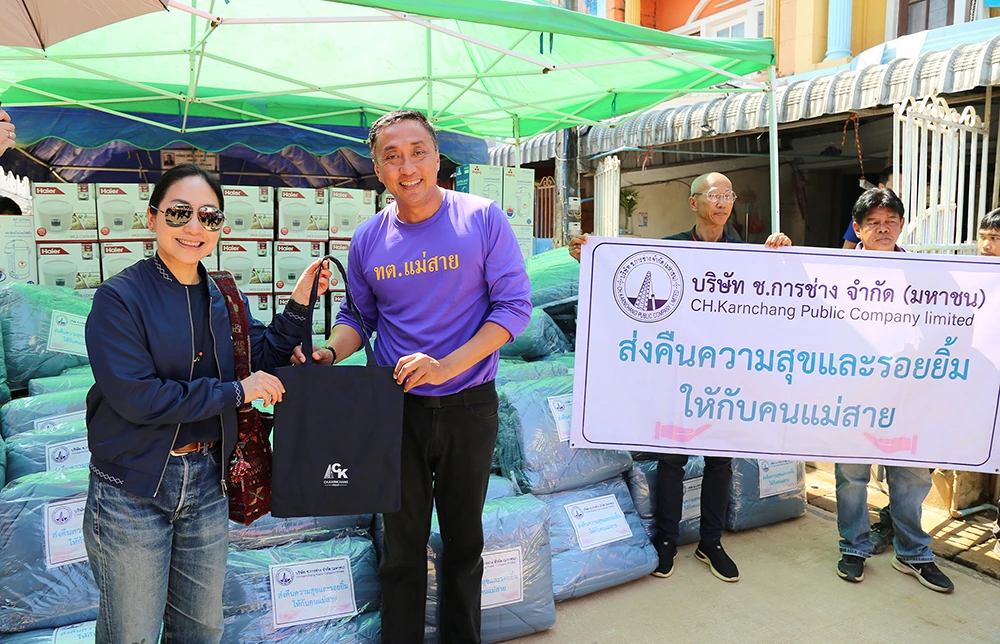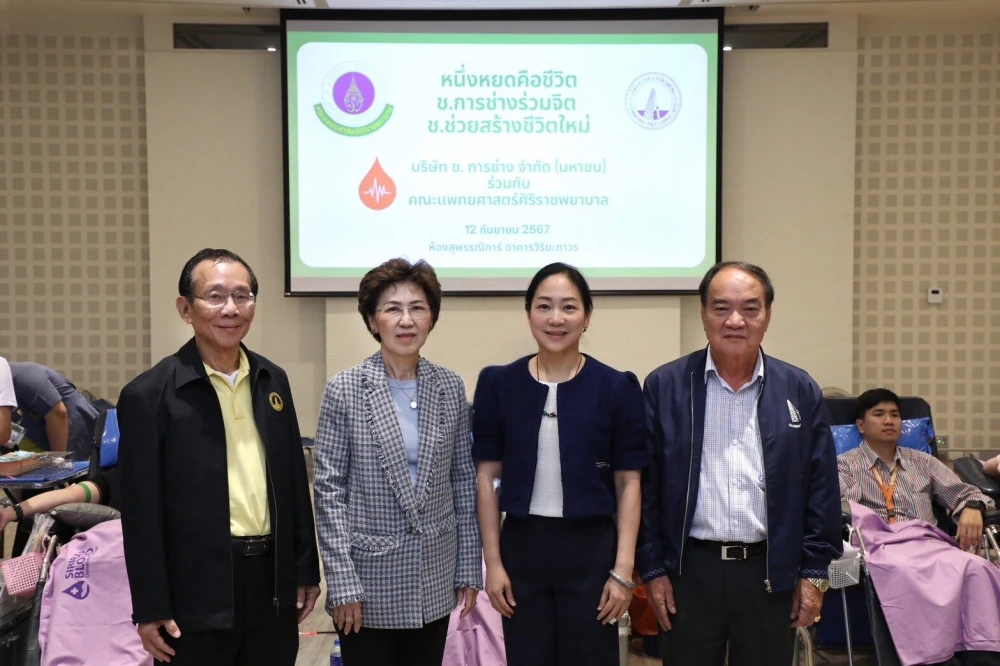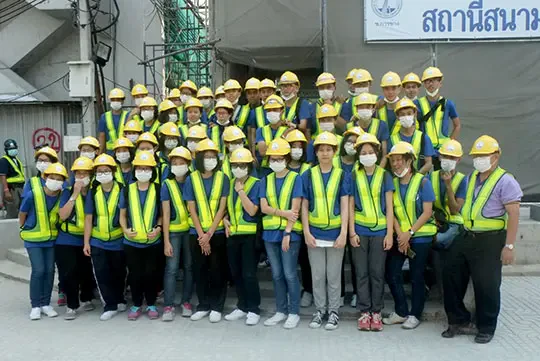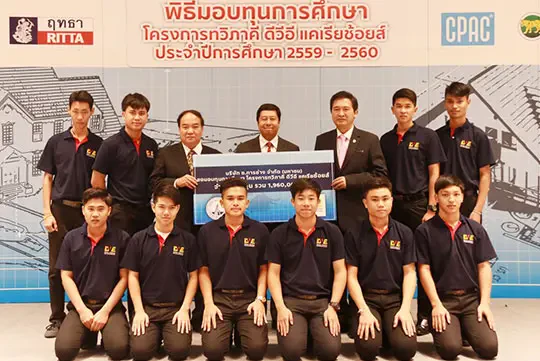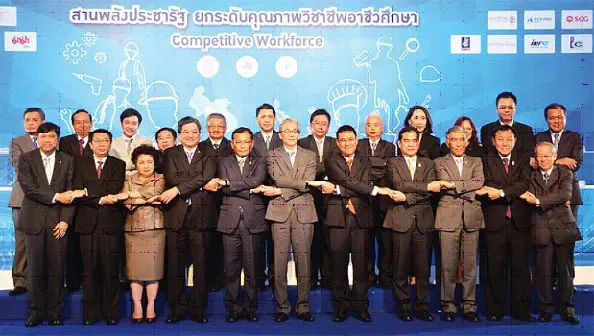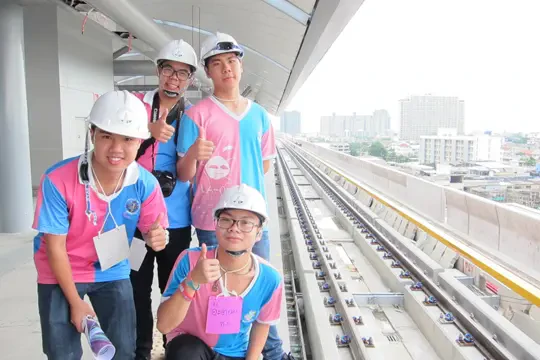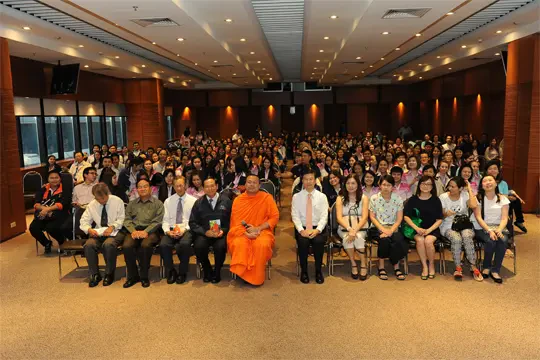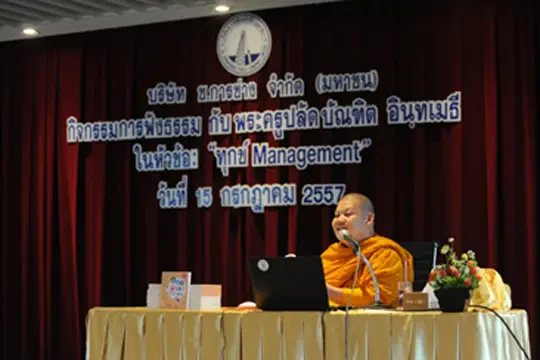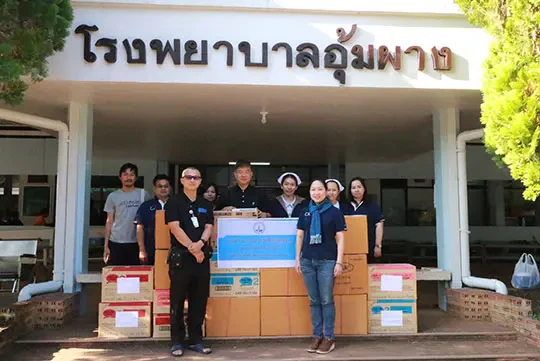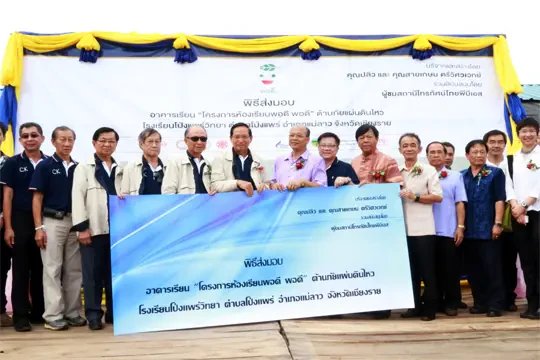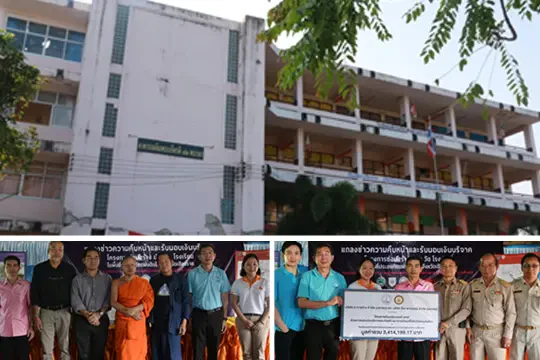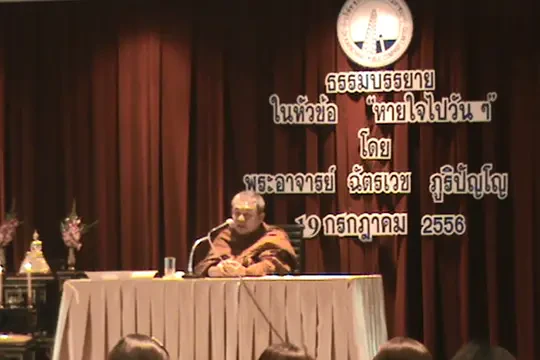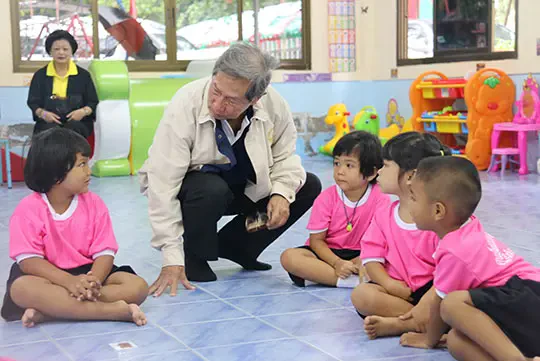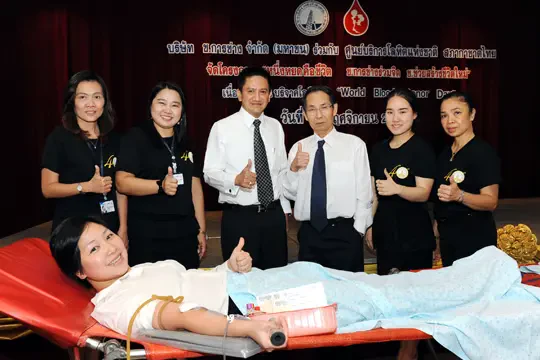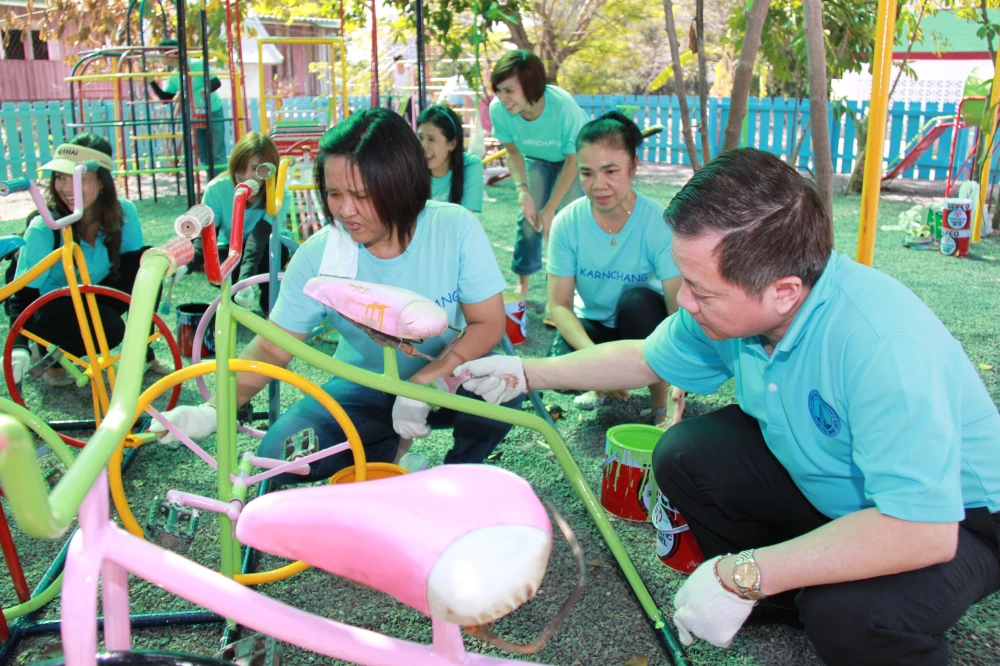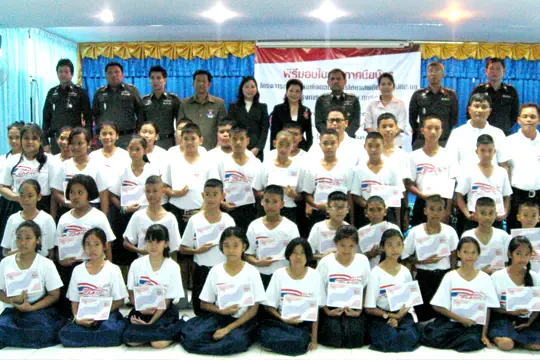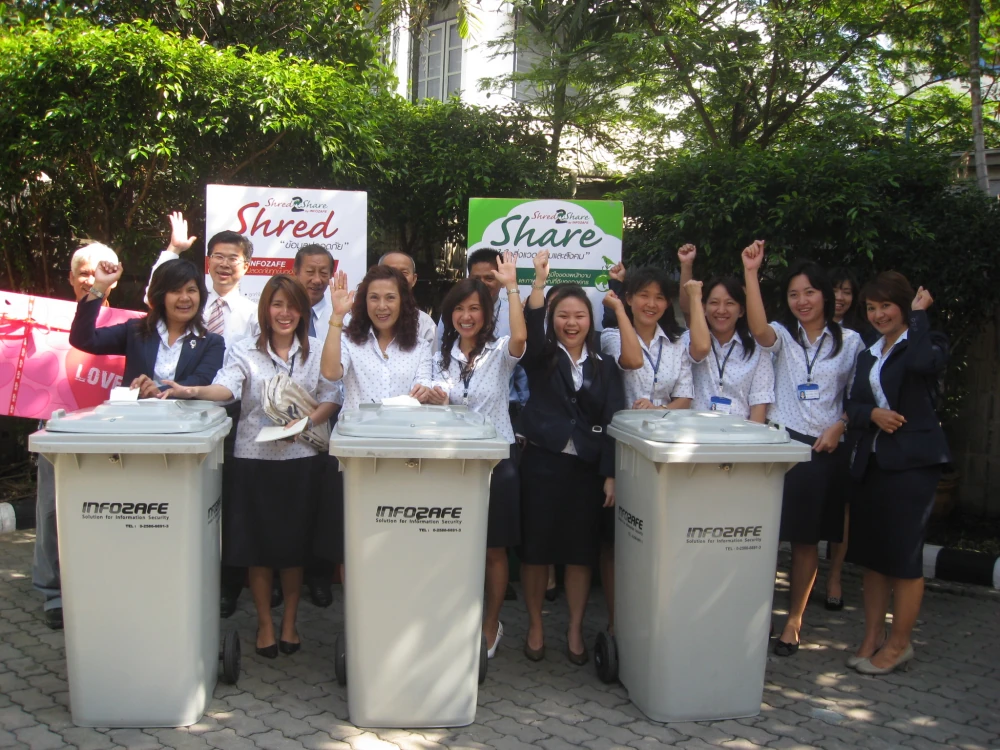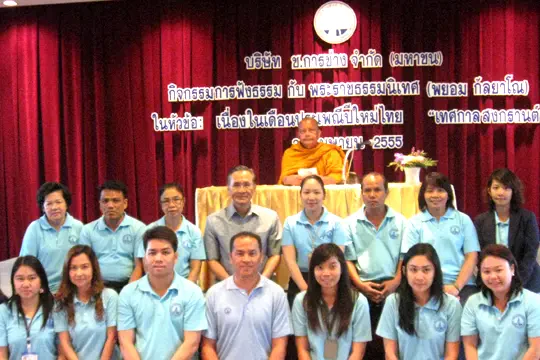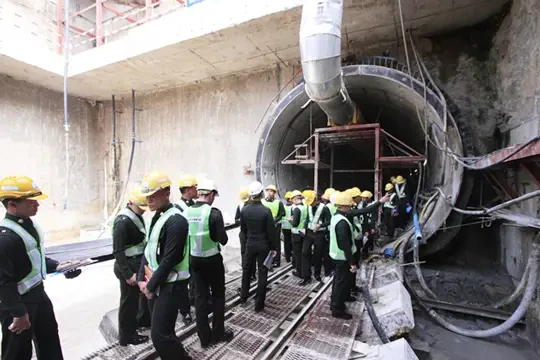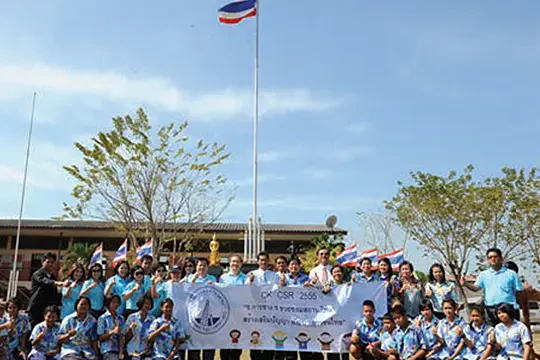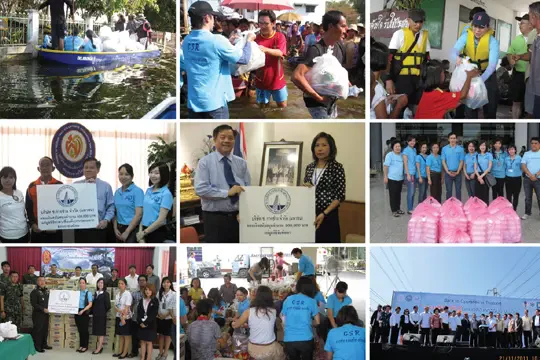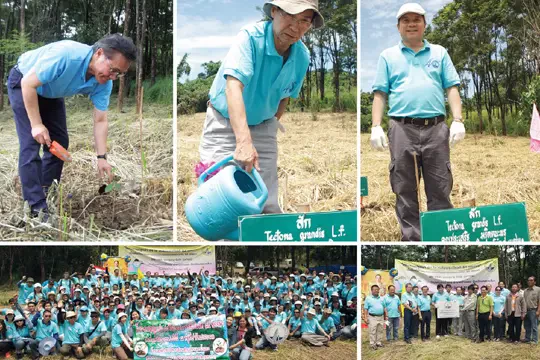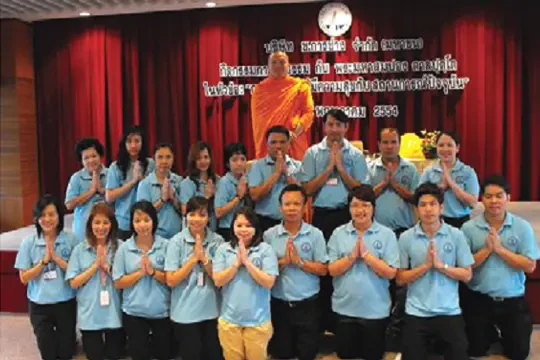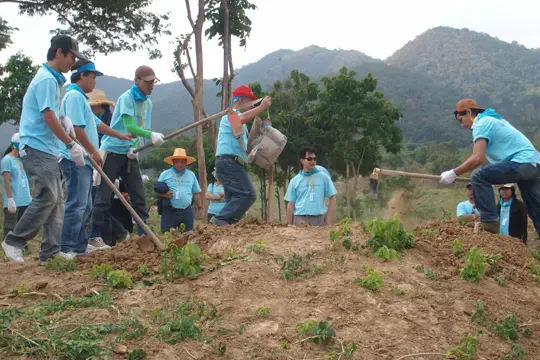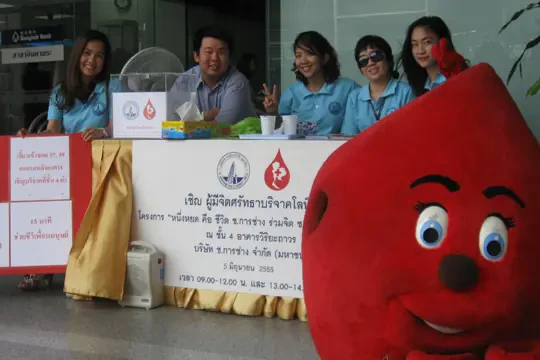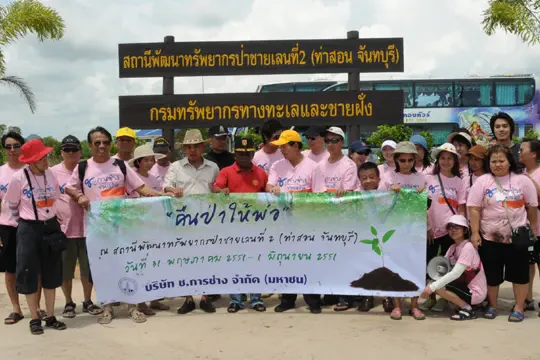

Social and Community Engagement
Commitment, Challenge and Opportunity
CH. Karnchang undertakes the development of critical infrastructure, encompassing road networks, expressways, mass transit systems, and public utilities. Given the nature of these projects, their implementation inevitably influences surrounding communities in multiple dimensions, including traffic congestion, road safety, and air quality concerns arising from particulate matter emissions.
Acknowledging these potential impacts, the company remains committed to proactive community engagement, fostering long-term relationships based on transparency and mutual trust. Through ongoing dialogue and corporate social responsibility initiatives, CH. Karnchang seeks to mitigate adverse effects while reinforcing a corporate image grounded in accountability. The company recognizes that community trust is a key determinant of project success, as a lack of stakeholder confidence may result in conflicts that could impact both operational continuity and financial viability.
In alignment with sustainable development principles, the company prioritizes transparent and inclusive community engagement through initiatives that support community development, uphold ethical labor practices, and promote diversity. These efforts are integral to fostering long-term sustainable partnerships. In addition to mitigating potential adverse impacts, the company plays a proactive role in driving positive socio-economic change across multiple dimensions. This includes improving the overall quality of life by generating employment opportunities and income for local communities, as well as supporting small and medium enterprises (SMEs) through localized procurement strategies. Moreover, the company implements targeted initiatives to enhance community well-being, including vocational skills development, health promotion programs, and active participation in essential infrastructure development. These projects—such as road rehabilitation, water supply enhancements, and electricity system improvements in underserved areas—are designed to create meaningful and lasting improvements in community resilience and quality of life.
These strategic initiatives underscore the company’s unwavering commitment to corporate social responsibility (CSR) and the sustainable creation of long-term value for communities. Addressing economic, social, and environmental dimensions, these efforts contribute to building trust and fostering strong stakeholder relationships, thereby enhancing corporate-community engagement in alignment with ESG principles.
Supporting the SDGs Goals
Goal 4:
Goal 10:
Goal 16:

Stakeholders Directly Impacted
Management and Operational Approach

CH. Karnchang is committed to fostering sustainable community development in areas surrounding its operational sites, particularly within a 5-kilometer radius, where communities are directly affected by the project. As key stakeholders, these communities fall under the company’s responsibility in accordance with the Environmental Impact Assessment (EIA) framework. The company’s initiatives in these areas emphasize strengthening stakeholder engagement and enhancing the well-being of local residents to drive long-term socio-economic benefits in alignment with sustainable development goals (SDGs).
In addition, the company is committed to supporting the well-being of communities and society in the vicinity of its project areas, even those not directly affected. CH. Karnchang has implemented initiatives that align with sustainable development goals by fostering long-term socio-economic and environmental benefits. These initiatives include investments in education, employment generation, and environmental conservation, contributing to an improved quality of life and promoting inclusive growth within society.
The company has integrated Community Investment into its business strategy by promoting sustainable development in its operational areas and extending these benefits to surrounding communities. This initiative aims to balance business operations with genuine social responsibility while minimizing both short- and long-term impacts of construction and infrastructure projects. To achieve this, the company first gathers community feedback and concerns regarding potential negative impacts. These insights inform the planning and execution of projects that align with the company’s business activities (CSR in Process). Key initiatives include supporting education, fostering community development through job creation and vocational training, and assisting disadvantaged and vulnerable groups to reduce social inequality. Furthermore, the company leverages the engineering expertise of its CH. Karnchang employees to support local communities and the public, offering employment opportunities to qualified individuals who meet company requirements (a structure set up to facilitate employee engagement in corporate social responsibility). It also prioritizes enhancing quality of life by promoting sports and recreational activities, health and safety measures, and environmental conservation—both within project areas and on a broader scale. Currently, the company is refining its CSR Strategy to improve the effectiveness of its community engagement efforts.
The company has established a Sustainability and Social Responsibility Committee, which consists of a chairperson and committee members tasked with monitoring and assessing the progress and effectiveness of corporate social and environmental responsibility initiatives. The committee also plays a pivotal role in shaping business policies that foster long-term sustainable growth, ensuring alignment with the interests of all stakeholders. These initiatives are implemented within the framework of Environmental, Social, and Governance (ESG) principles, reinforcing the company’s commitment to sustainability through measurable and impactful outcomes.
Community Engagement Framework
Continuous Care for the Community and Society
Community Engagement in Impact Mitigation and Corporate Sustainability Practices
CH. Karnchang adopts a stringent impact mitigation framework to ensure that all projects align with environmental and social responsibility standards, thereby preventing adverse effects on local ecosystems and communities. As a trusted contractor for large-scale infrastructure projects, the company adheres to the Environmental Impact Assessment (EIA) requirements set forth by the Office of Natural Resources and Environmental Policy and Planning. This compliance process includes proactive stakeholder engagement, incorporating community feedback and addressing concerns at all stages of project implementation, from pre-construction assessments to ongoing operational monitoring. The company ensures transparency by providing clear information about the project, including mitigation measures for safety and environmental impacts. It has also established communication channels to facilitate community engagement, allowing stakeholders to stay informed and coordinate with the project efficiently. Actively gathering community feedback and recommendations is a crucial aspect of refining operational processes, both on-site and through the company's grievance mechanisms, to facilitate seamless project execution.
| Community and Social Management Plan for 2024 | Policies and Measures |
|---|---|
|
Employment and Vocational Skill Development
|
The company is committed to fostering sustainable community development by utilizing its expertise and workforce capabilities. In alignment with sustainable development goals (SDGs), it has implemented the “Innovation in Community Craftsmanship” initiative for the fourth consecutive year. This program aims to enhance local artisans' skills, promote sustainable economic opportunities, and integrate innovative practices into traditional craftsmanship. |
|
Religion and Cultural Heritage
|
The placement of stations should be carefully planned to avoid proximity to cultural heritage sites. If any archaeological artifacts or historical sites are discovered during construction, the relevant authorities, including Thailand’s Fine Arts Department, must be notified for an official assessment and preservation considerations. |
|
Forests and Natural Resources Management
|
As part of the sustainable development initiatives for the electric rail project, designated parking areas have been integrated with green spaces to support ecological landscaping and urban biodiversity. The selection of tree species prioritizes native Thai flora and other resilient, low-maintenance species that contribute to urban cooling, air purification, and aesthetic enhancement. These trees provide shade, are non-toxic, do not emit strong odors, and possess root systems that mitigate risks of infrastructure damage. Selected species include the Bodhi tree (Ficus religiosa), Mahogany (Swietenia macrophylla), Yellow Flame tree (Peltophorum pterocarpum), Lamduan (Melodorum fruticosum), and Fountain Palm (Livistona rotundifolia), alongside a variety of ornamental and flowering plants to enhance environmental quality. |
|
Community and Social Management Plan – Sports and Recreation
|
The development of sports and recreational facilities must adhere to approved design principles while ensuring environmental and contextual suitability. Architectural integration should emphasize the preservation of local identity, harmonizing with the existing landscape to mitigate adverse visual impacts. Key considerations include scale, proportion, color schemes, material selection, and adherence to internationally recognized architectural aesthetics, aligning with sustainable urban development principles. Additionally, contractors responsible for detailed design implementation must engage in ongoing coordination with relevant regulatory bodies throughout the project cycle. This process ensures regulatory compliance, minimizes environmental disruption, and enhances the project's contribution to sustainable and inclusive community development, in line with SDG 11 (Sustainable Cities and Communities) and ESG criteria related to social infrastructure and environmental impact management. |
|
Occupational Health, Safety, Well-being, and Quality of Life
|
The company strictly adheres to occupational health and safety (OHS) standards and implements comprehensive environmental measures to prevent workplace accidents and mitigate environmental impacts on surrounding communities and society. Additionally, the company provides insurance coverage to safeguard against bodily harm, loss of life, or property damage sustained by third parties or the public due to project construction activities. |
|
Water and Sanitation Management
|
The organization implements wastewater treatment and solid waste management measures in compliance with established environmental and public health regulations. These efforts aim to mitigate health risks and prevent the proliferation of disease-causing pathogens, ensuring sustainable sanitation practices in alignment with global sustainability frameworks. |
|
Addressing Social Inequality
|
To promote transparency and inclusivity, the project aims to provide clear and reliable information to directly affected stakeholders. Furthermore, it ensures that these stakeholders have the opportunity to express their perspectives in alignment with the principle of public participation, reinforcing the commitment to equitable and sustainable development. |
In 2024, a community engagement survey was undertaken for the Purple Line Mass Transit Project, Tao Poon – Rat Burana section (Kanchanaphisek Ring Road), as part of Contract 1 under the construction phase. This contract encompasses the design and construction of running tunnels and underground stations spanning from Tao Poon to the National Library. The survey findings identified key adverse impacts occurring during the construction phase. In alignment with sustainability and ESG principles, the company has promptly implemented mitigation measures to address these issues, ensuring minimal disruption to the community and broader social environment.
| Key Identified Impacts | Proposed Mitigation Strategies and Measures for Impact Reduction |
|---|---|
|
Traffic congestion, road obstructions, and necessary route diversions resulting from construction activities under the project framework.
|
Advance notification and public dissemination of traffic-related changes, such as scheduled road closures, should be ensured to facilitate smooth transportation planning and minimize disruptions. |
|
Mitigation of Construction-Related Airborne Particulates
|
To control particulate emissions from the construction project, dust suppression measures have been systematically implemented along Phra Sumen Road. These measures include regular water spraying, mechanical street sweeping, and vacuum-assisted road cleaning. Such efforts aim to mitigate airborne particulate dispersion, contributing to improved air quality and environmental sustainability in alignment with sustainable development and environmental, social, and governance (ESG) principles. |
|
Noise Impact from the Construction Project
|
To minimize environmental disturbances, construction activities that produce significant noise should be avoided during nighttime hours. In cases where such activities are unavoidable, prior public notification must be issued to ensure transparency and mitigate potential disruptions to the surrounding community. |
Employment and Local Procurement for Sustainable Development

The company is committed to the principles of sustainable development, emphasizing business practices that generate positive social and environmental impacts.
A key aspect of this commitment is the support of local communities through expanded local employment and prioritizing procurement sourcing from community-based suppliers. These initiatives contribute to enhancing community well-being, fostering grassroots economic growth, and reducing carbon emissions and pollution associated with transportation. By embedding these practices into its operations, the company not only generates long-term business value but also invests in a more sustainable future.
